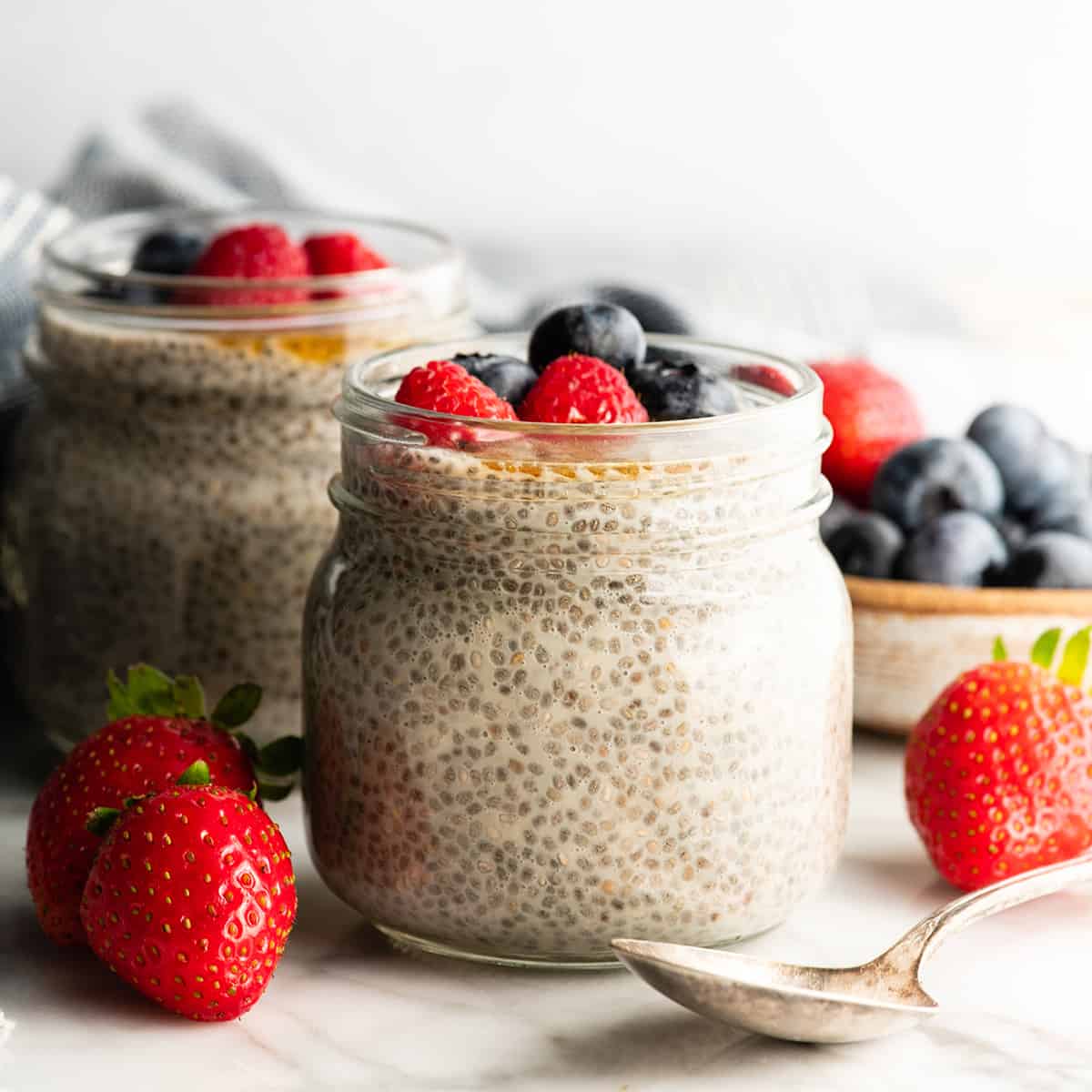Embark on a culinary journey where the simplicity of chia pudding meets the satisfying principles of the Banting diet. Imagine creamy, subtly sweet chia seed puddings, bursting with flavor variations that are both delicious and perfectly aligned with your healthy lifestyle goals. This guide unveils the secrets to crafting effortless yet elegant chia puddings, ideal for those new to the Banting way of eating. Discover how the nutritional powerhouse of chia seeds seamlessly integrates into this popular diet, creating a satisfying and versatile addition to your daily meals.
We’ll walk you through a foundational recipe, then explore exciting flavor adventures—from the tropical allure of coconut to the vibrant tang of berries and the rich indulgence of chocolate. Learn expert tips and tricks to achieve the perfect texture every time, troubleshoot common challenges, and elevate your presentation with stunning plating ideas. Prepare to be inspired by the versatility and delightful taste of Banting-friendly chia pudding.
Tips and Tricks for Banting Chia Pudding Success

Achieving the perfect Banting chia pudding requires attention to detail, but the results are well worth the effort. This section will guide you through achieving the ideal consistency and texture, troubleshoot common issues, and offer creative serving suggestions to seamlessly integrate this delicious and nutritious dessert into your Banting meal plan.
Mastering the art of Banting chia pudding hinges on understanding the interplay between the chia seeds, liquid, and any added flavorings. The ratio of these ingredients directly impacts the final texture, determining whether your pudding is creamy and smooth or grainy and thick. Understanding this relationship is key to consistent success.
Achieving the Perfect Consistency and Texture
The key to a perfect Banting chia pudding lies in the balance of liquid to chia seeds. A general guideline is to use a ratio of approximately 1 part chia seeds to 4-6 parts liquid. However, this can vary depending on the type of liquid used and your personal preference. For example, using almond milk may result in a slightly thinner pudding compared to coconut milk, which tends to create a richer, thicker consistency. Experimentation is encouraged! Start with the lower end of the liquid ratio and gradually add more until you reach your desired consistency. Allowing the pudding to chill in the refrigerator for at least 4 hours, or preferably overnight, is crucial for the chia seeds to fully absorb the liquid and create that signature creamy texture. If you prefer a firmer pudding, simply increase the ratio of chia seeds to liquid. Conversely, for a looser consistency, add more liquid.
Troubleshooting Common Issues
Beginners may encounter challenges like a pudding that’s too thick or too thin, or one that lacks flavor. A pudding that is too thick might indicate an insufficient amount of liquid. Simply add a tablespoon or two of your chosen liquid at a time, stirring gently until the desired consistency is achieved. Conversely, a pudding that’s too thin likely needs more chia seeds. Again, start with small additions (a tablespoon at a time) to avoid over-correcting. Lack of flavor can be easily addressed by enhancing the recipe with extracts, spices, or sweeteners allowed on the Banting diet. A dash of vanilla extract, a sprinkle of cinnamon, or a touch of stevia or erythritol can elevate the taste significantly.
Creative Serving Suggestions and Meal Plan Integration
Banting chia pudding is remarkably versatile. It can be enjoyed as a standalone dessert, a healthy breakfast option, or even incorporated into a more substantial meal. Imagine a vibrant layer of berry chia pudding nestled atop a bed of creamy coconut yogurt and topped with a sprinkle of chopped nuts. Alternatively, consider a savory variation: a chia pudding made with bone broth, seasoned with herbs and spices, and served as a unique and protein-rich side dish. For a satisfying breakfast, pair your chia pudding with a side of scrambled eggs or smoked salmon. Remember to always consider the overall macronutrient balance of your meal when integrating chia pudding into your Banting meal plan. The pudding itself is relatively low in carbohydrates, but the additions you choose can impact the overall nutritional profile.
Mastering the art of Banting chia pudding opens a world of healthy and delicious possibilities. From the foundational recipe to the exciting flavor variations, you’ve now unlocked the key to creating satisfying and nutritious desserts that align perfectly with your dietary choices. Remember, the journey to healthy eating is enhanced by enjoyment, and these chia pudding recipes are designed to make that journey both delicious and rewarding. Experiment with flavors, personalize your presentation, and savor the delightful results of your culinary exploration.
Helpful Answers
Can I use other types of milk besides coconut milk in the Banting chia pudding?
Yes, almond milk, macadamia milk, or even full-fat milk (in moderation) can be used as substitutes for coconut milk, depending on your preferences and dietary restrictions.
How long can I store leftover chia pudding?
Store leftover chia pudding in an airtight container in the refrigerator for up to 3-4 days. The texture might thicken slightly over time.
Can I sweeten the chia pudding with something other than stevia or erythritol?
While stevia and erythritol are common Banting-friendly sweeteners, you can experiment with other sugar substitutes like monk fruit or xylitol, always ensuring they fit within your Banting guidelines.
What happens if my chia pudding is too thick or too thin?
If it’s too thick, add a little more liquid (your chosen milk). If it’s too thin, let it sit in the refrigerator for a longer time to allow the chia seeds to fully absorb the liquid.


